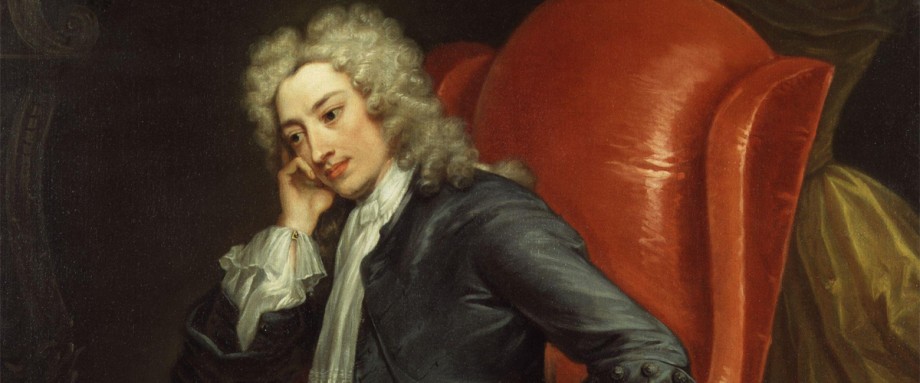Introduction to the Poet of Still Life:
Attipat Krishnaswami Ramanujan was born in Mysore City on 16th March, 1929 as the son of an astronomer and professor of Mathematics. Not only an Indian poet and scholar of English Literature, but he was also a translator, playwright, folklorist and philologist. He wrote both in English and Kannada, though his academic research ranges across Tamil, Telegu and Sanskrit as well.
Educated at the University of Mysore, his poems are enigmatic in nature showing originality, elegance, refinement and great flair. Though his written work faced a lot of controversial setbacks, he was awarded the prestigious Padma Shri award by the Indian Government in 1983 and the Macarthur Prize Fellowship.
A.K. Ramanujan passed away on July 13,1993 in Chicago as a result of an adverse reaction to anaesthesia during a surgery.
The Poem:
Written in a minimalistic style, ‘Still Life’ by A.K. Ramanujan stands out as a poem extruding the feeling of melancholy and incompleteness of an isolated soul. A.K. Ramanujan, famous for his unique amalgam of traditional and modern – has an anti-sentimental approach to life in his poetry. This poem thus, blooms in a similar pattern like other poems, touching a chord in our heart.
Setting of Still Life:
The poem is post probably set in a culinary bookstore or a place where one can read and eat. As evident from the poet’s act of reading after lunch and looking at the half eaten leftovers of the lady’s food, it clearly shows the setting of the place is such that it is meant for mostly eating and reading.
Further, the eating of the luncheon preferably means it is noon time, where the lady had come and left. Also, the half eaten sandwich might mean she was in an argument or in the midst of anger to put an end of a romantic association. This sets a melancholic mood in the poem but the unsentimental touch by the poet gives the poem a unique yet beautiful disposition.
The setting of the poem focuses on the modern life as it deals with the culinary bookstore, the lady leaving and departing with the poet going back to the books. Neither is the poem saccharine nor sugary; just matching the characteristics of Ramanujan’s style of poetry.
Rhyme of Still Life:
When she left me (x)
after lunch, I read (a)
for a while. (x)
But I suddenly wanted (a)
to look again (b)
and I saw the half-eaten (b)
sandwich, (x)
bread, (a)
lettuce and salami, (x)
all carrying the shape (x)
of her bite. (x)
Metre of Still Life:
The poem is written in Iambic Trimeter.
The closest stanza type is the sonnet type.
Poetic devices in Still Life:
Symbolisms:
‘Bread’ and ‘Sandwich’ might be symbolisms to life where ingredients of every flavour can found where as lettuce is a symbolism for a sexual relationship. The salami, which is associated with meat or masculinity, might be a symbol for carnal desire and lust. Thus, when the lady love departs, these wishes and dreams might have remained unfulfilled.
Imagery:
The poem distinctly creates an image where the lady love of the poet had departed after lunch, keeping the poet at a bay. He reads to distract himself or he might actually prefer reading to a romantic association but he looks at the leftover food which reminds him of her absence.
The imagery creates a melancholic atmosphere where the reading of the poet creates intellectual circumstances, too.
Summary of Still Life:
The poem has a sophisticated and beautiful aura. Still Life by A.K. Ramanujan deals with the feeling of absence of a woman in the poet’s life. It seems there is a beauty in absence. The leftover pieces of bread, sandwich, lettuce and salami repeatedly remind the poet of the lady’s departure. The lady referred to as ‘she’, might be the poet’s lady love; but it is her absence that contributes to the beauty of the poem rather than herself.
Quoting the beginning of the poem, ‘When she left’ theorises that the poet is recollecting the time when ‘she’, most probably the poet’s lady love ‘left’ him. The leaving might be considered as a permanent leaving or detachment.
To distract himself or not to get too involved in the incident he might have gone back to books because reading is the only shelter. Though he was reading his mind drifted over the leftover food: sandwich, lettuce, bread, salami. The leftover food items were reminder of her vacancy that had been created. Further, it increases the beauty of the poem and is remarkably strong symbolism of a sudden ending to a long association, probably romantic.
Critical analysis of Still Life:
The poem ‘Still Life’ by A.K. Ramanujan is a poem having an allegory in it, that is, it has a literal as well as a symbolic meaning.
The literal meaning:
The poet refers to a woman as ‘she’, who left him after lunch. The relationship between the poet and her is subject of ambiguity. She might have been his lover or someone closely incorporated in the poet’s life. However, it is clear from the poet’s tone addressing to the woman that she was someone the poet held dearly in his heart. She left him after lunch, this suggests the relationship between the poet and she has come to an end. After she left, the poet went back to reading; conceivably because he found solace in reading. Though he was reading, his mind drifted and he looked at the leftover food on her plate. This reminded him of her absence, the depth of her void. This is where the grace and charisma of the poem reach its maximum. The theme of the poem is intimately intertwined with the beauty of the lady’s absence and not by her own self.
Symbolical meaning:
- End of an intimate association: The ‘leaving’ of the woman might indicate a complete detachment from the poet. This indicates that the relationship between the poet and her has come to an end. When she left, the poet went back to his books. Perhaps in books, he found a true friend, a tranquillity and sense of calmness.
However, in the course of his reading, he looked at the leftovers of her food. The leftovers are themselves metaphors. The ‘sandwich’ and ‘bread’ are metaphors for life, the ‘lettuce’ has been considered as a metaphor for ‘sexual relationship’ and ‘salami’ symbolises masculinity and lust. With the departure of the lady, the poet’s hopes and expectations, the utopia and surmise has been obliterated.
As a result, these food items carrying ‘the shape of her bite’ represents that not only these reminds the poet of the woman but also he is deeply pained by her departure. - Death: ‘Leaving’ might also suggest the death of the lady and the half eaten sandwich, lettuce and salami represent that the death was sudden and unexpected: leaving the poet at his own sorrow. When he looked at the leftover pieces of food, representing the absence of the lady – his hopes and expectations regarding a life with her come to an end, in a tragic way. He finds a distinct pain even though he tries to compensate for her company through reading. However, ultimately the lady’s death causes a distinct ache in his heart, an irreparable loss.
In the food items, he still finds the relationship they shared, alive. This interpretation also quite matches with the title of the poem. Even after death, the remnants of her existence render her alive in poet’s heart.
Central Idea Of Still Life:
The central idea of the poem is the poet’s feeling over the lady’s absence. Though the relationship between the lady and the poet remains a topic of vagueness, yet it is clear that the poet held her dearly to his heart. Specifically, this is the reason why her absence has created a void in his life remarked by the remnants of her existence. The beauty and enigma of the poem is not the woman, not the relationship they share, but it is the beauty in that void, the charm that is created by the lack of her presence.
The central idea is brought out in a tenuous manner with enlightened fashion, combined with traditional and cosmopolitan manner, a typical fashion adopted by Ramanujan.
Tone of Still Life:
The tone of the poem is melancholic with an amalgam of the tradition and cosmopolitan. The departure of the beloved creates a sense of unfulfilled void.
Even though since the beginning of the poem, the poet keeps the tone far from over-sentimental , at the end it changes to sadness and the loneliness due to the lady’s departure and the leftovers that remind the poet of her existence. Thus, we can say, the poem brings forth its theme in a melancholic disposition unoccupied with over-dramatic measures.
Conclusion:
On the conclusion, it is evident that the poem , with its lucid language and magnifying and charming diction, brings out a unique beauty. This poem not only portrays the poet’s superiority over everyday life but also holds a remarkable position in literature.
Contributor: Bidisha Das
Some online learning platforms provide certifications, while others are designed to simply grow your skills in your personal and professional life. Including Masterclass and Coursera, here are our recommendations for the best online learning platforms you can sign up for today.
The 7 Best Online Learning Platforms of 2022
- Best Overall: Coursera
- Best for Niche Topics: Udemy
- Best for Creative Fields: Skillshare
- Best for Celebrity Lessons: MasterClass
- Best for STEM: EdX
- Best for Career Building: Udacity
- Best for Data Learning: Pluralsight













